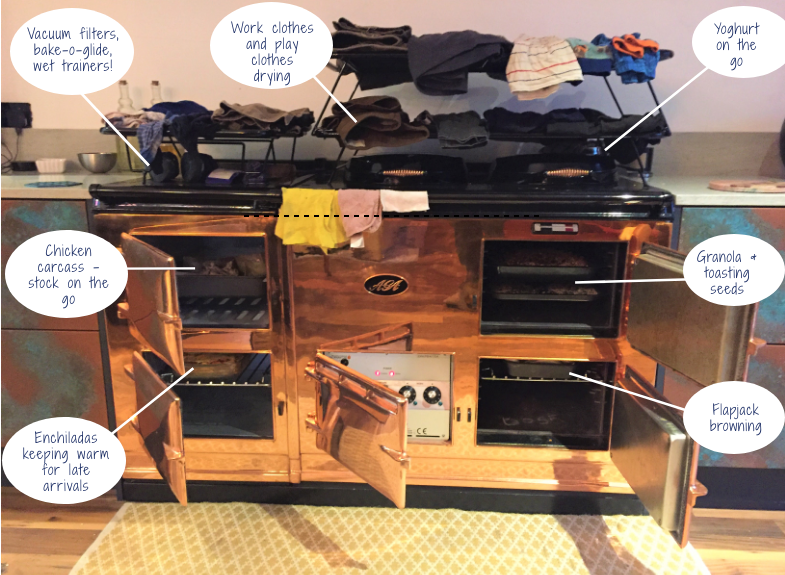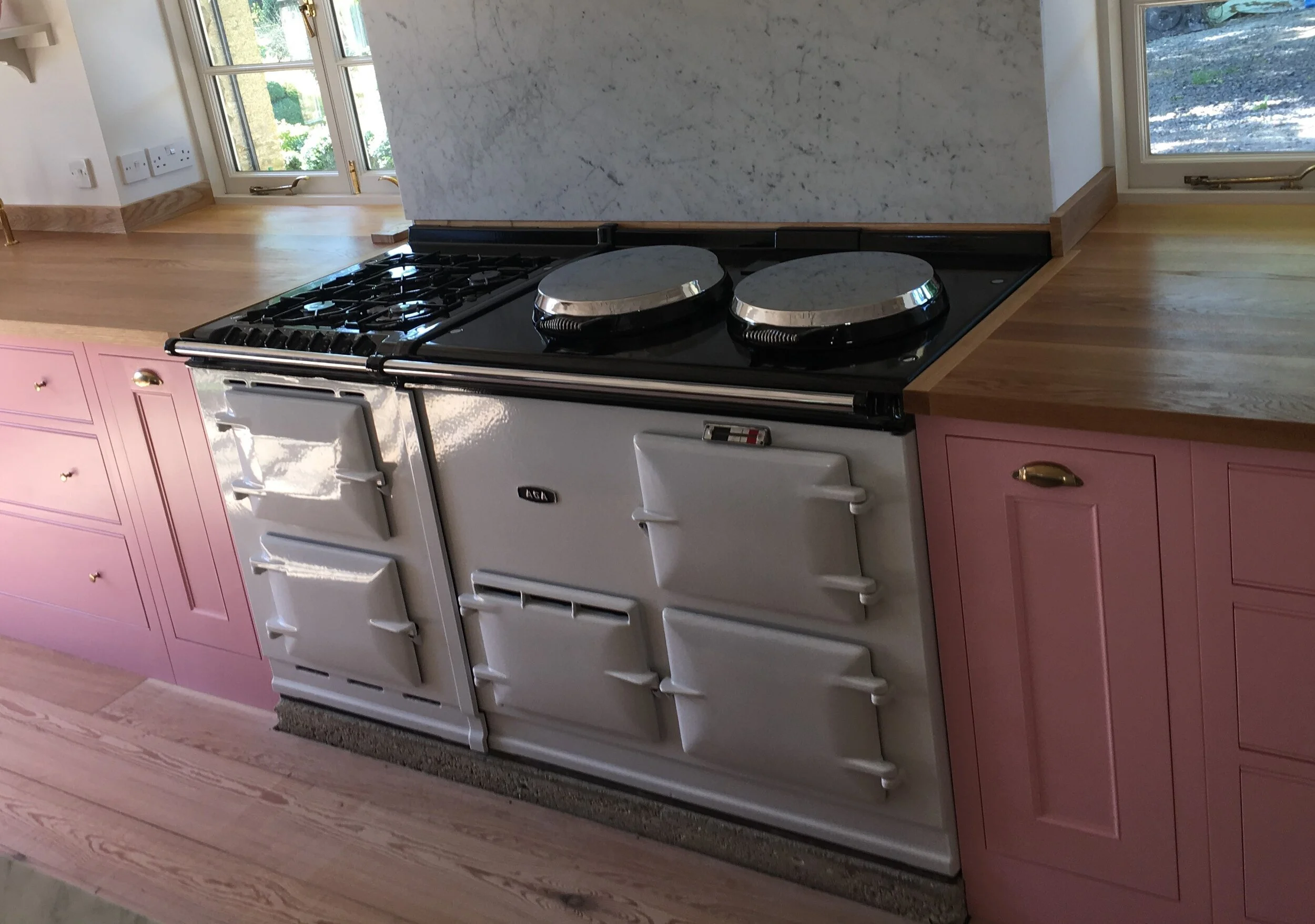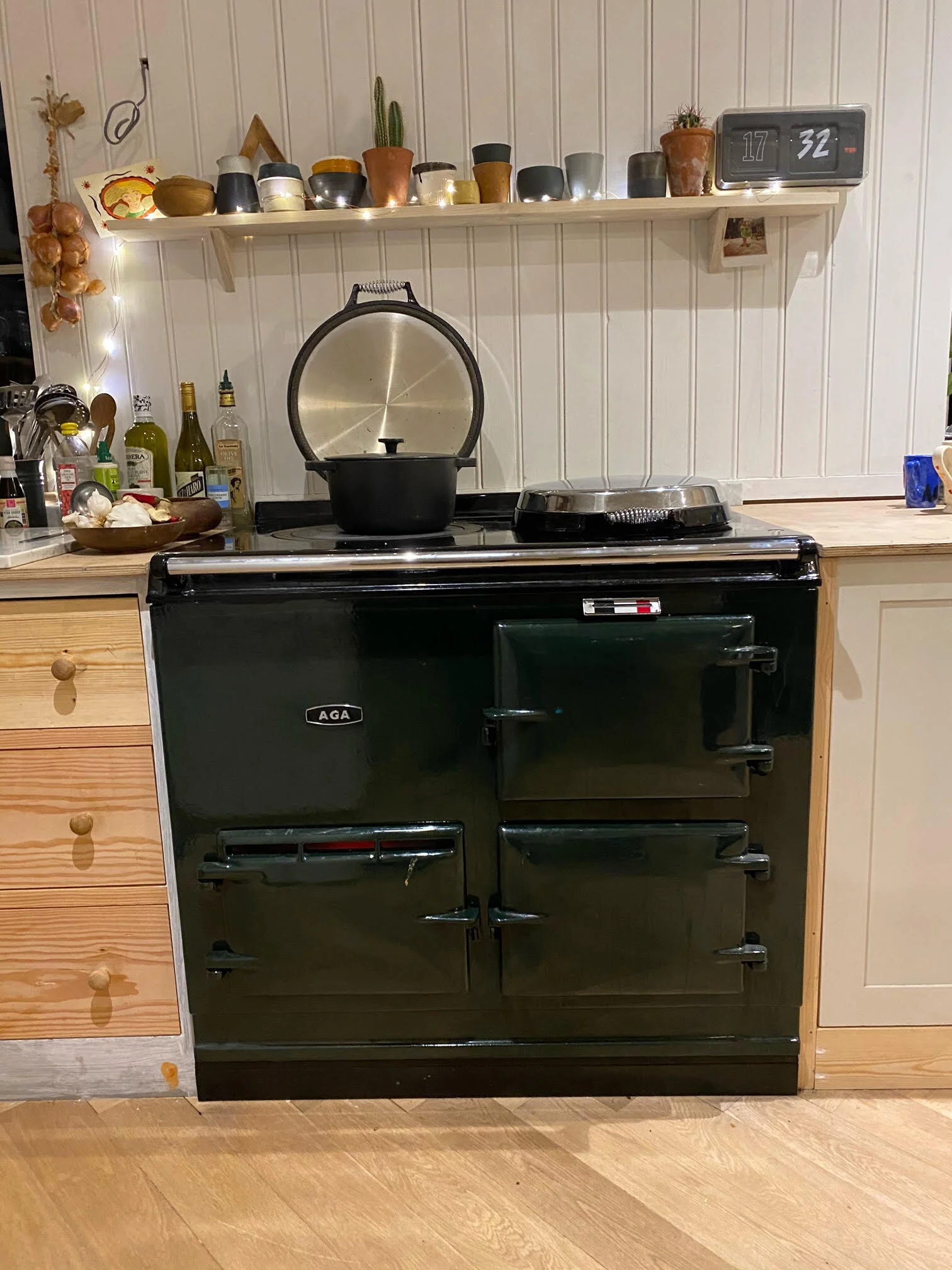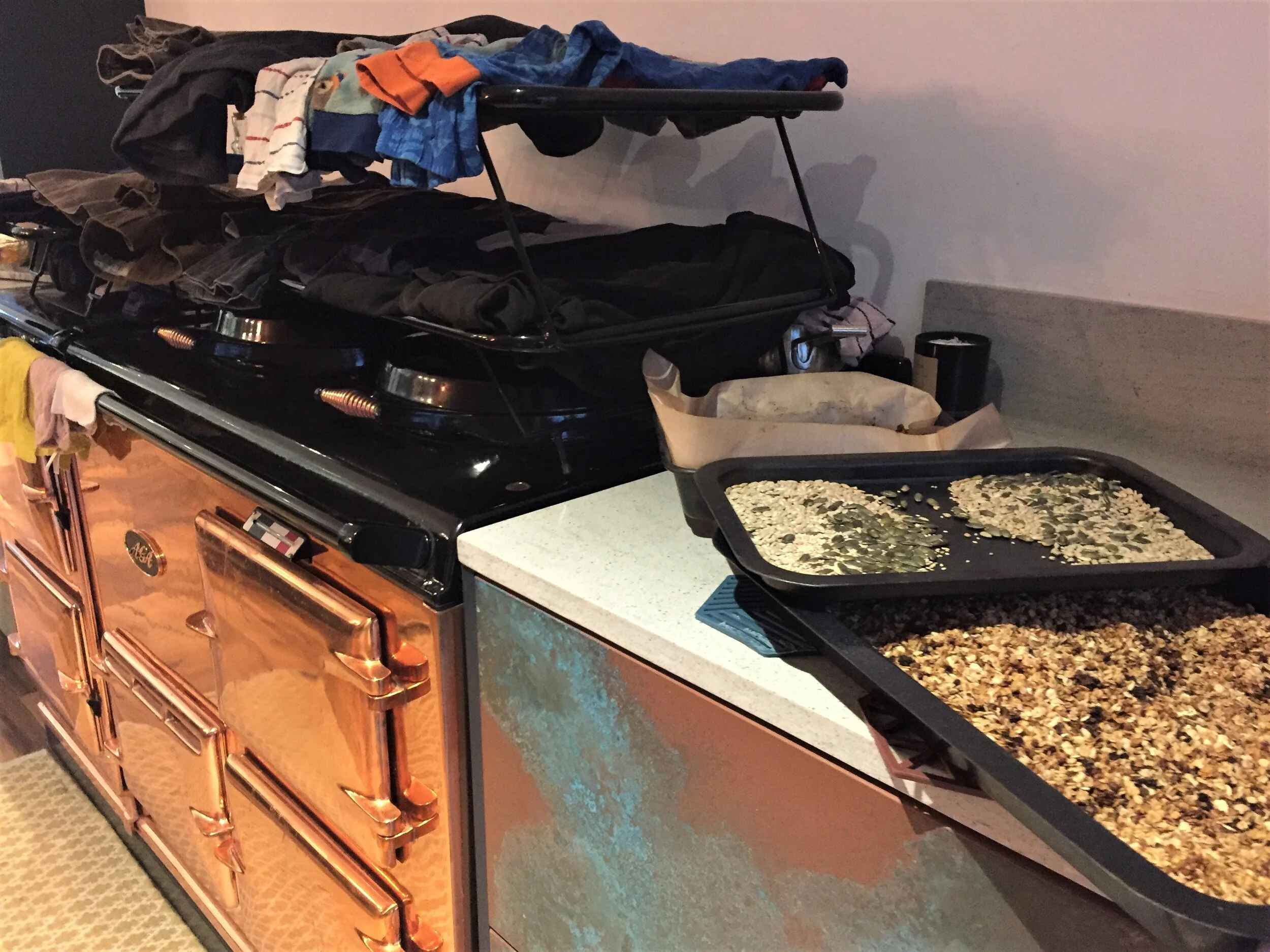ELECTRICKIT MYTH BUSTING
In my many conversations with potential Electrickit users and across social media, I hear and see a growing level of conversation, debate and confusion about Electrickit.
With the increasing number of electric options on the market, misinformation and confusion can all too readily spread. One person’s experience of their particular model, rapidly becomes a sweeping statement about all electric Agas, whilst some die hard traditionalists look on with derision at the move towards electric.
Whilst Electrickit is not for everyone (hence the wide range of models we supply at Rural Ranges in Dorset), it has become justifiably popular and is an increasingly popular choice for those seeking flexibility, lower running costs, reduced maintenance and a cleaner energy source. Time to clear up a few common misconceptions….
Electrickit Myth No 1:
“Electrickit is only cheap to run if it’s never on!”
With the widespread promotion of the 13Amp Aga in the early 2000s, electric Agas gained a reputation for being expensive to run.
The inception of controllability with Aga’s own Total Control and Dual Control and then the independently manufactured Electrickit, introduced the idea that by using the Aga more flexibly, substantial savings could be achieved. However the secret to Electrickit’s efficiency goes far beyond its controllability.
1. Cast iron has a substantial mass; for an element to heat that mass, a considerable work out is required. By removing excess cast, we reduce that workload.
With Electrickit, anything not integral to its operation, is removed. Out goes the barrel, hefty hotspots, ash pit, oven and flue manifolds, conducting plates and other smaller sundries. The result; an easier life for the element and lower running costs for the user
2. In a traditional Aga set up, heat is produced on the left hand side of the Aga - in the burner - and moved around the Aga with the help of directional baffles and heat conducting plates.
In Electrickit, the heat is produced where it is needed, between the ovens, reducing unnecessary heat loss and reducing the workload of the element.
By introducing a further 2 - 3 elements – one for each hot spot, and a third for the hot cupboard on the 4 oven, each element is able to heat only the zone it is located in. And as you’ll have figured out by now less work for the elements = less cost to you.
3. The way in which Agas are insulated has evolved over time, with each new inception reducing inefficiencies. Early Agas were filled with fuller’s earth (every engineers nightmare!), then vermiculite and rockwool were introduced, before ceramic blanket insulation started to come into play.
Electrickit is insulated with highly efficient ceramic blankets only. These trap heat where it is needed – within the ovens. Less heat loss = lower running costs.
“I’ve seen the published running costs but how much does Electrickit REALLY cost to run?”
Our users report costs of between £9.99-£21.80per week (revised to reflect April 2025 price cap). For the very lowest running costs, Electrickit is used flexibly, turning up and down as needed, left on in the cooler months and turned on only for use in the summer (as in the field trial outline here https://www.ruralranges.com/electrickit-aga-conversion).
Those reporting £18.02-£22.34 (revised to reflect April 2025 price cap) per week left the Aga on continually, turning on the hotspots only for use or leaving one hot spot on continually.
Some users have trialled both leaving ovens on low and turning up for use or leaving at cooking temperature continually and found the difference to be fairly minimal.
Our recommendation? Use the ovens in the way which is most convenient to your lifestyle whilst minimising hot plate use to cooking periods, this will balance convenience and a traditional Aga feel with reduced running costs.
Electrickit Myth No 2:
“Electrickit isn’t a proper Aga” / “You may as well have a conventional cooker”
Want to truly rile an Aga owner? Tell them their Aga isn’t a “proper Aga”. Statements like this are born out of ignorance and most likely those who have never properly experienced a ”modern” Aga.
A key selling point of any Aga is the dream of delicious cast iron cookery – moisture packed meat, crisp roasties, perfectly baked cakes.
All of these are just as true of Electrickit as of any other model. Whilst cooking techniques are tweaked due to the positioning of the elements (book one of our zoom demos for a complete run through of Electrickit techinques https://www.ruralranges.com/demonstrations-events), the features which make cast iron cooking so special remain.
Electrickit can be used as traditionally or as flexibly as you wish. The only hard and fast rule is that the hobs should not be left on above half heat with the lids down.
Beyond that, if a traditional Aga feel but on a greener energy source is what you are looking for, leave those ovens on, dry that washing, treat your Electrickit like the heart of the home Aga it still should be!
Electrickit Myth No 3:
“Electrickit won’t heat my kitchen”
There Is more truth in this perhaps than some of the truly outrageous statements I hear about Electrickit. Electrickit will reduce heat output into the room compared with a traditional model. The superior insulation is designed to avoid the expense of “wasted heat” to some degree.
However Electrickit still provides a level of ambient heat – I would suggest around 60-70% of that of a traditional Aga when run at a comparable temperature.
Less so when compared to the particularly hot 30Amp night storage model. Whilst Electrickit won’t drive damp from a poorly insulated farmhouse kitchen (30Amp is our go to for that), it will provide pleasant ambient heat to a medium sized room or the zone in which it is housed in a larger room.
As with any model, calculating exactly how far Electrickit will go towards heating the space can be problematic. As a guide however, Electrickit will give the warmth and ambience you would expect when gathered around the Aga but should not be relied upon as the sole heat source within a large space, especially if poorly insulated or draughty.
The higher you run the Aga, the more heat provided – run at 180 or above for optimum heat output. At very low settings, heat output will be minimal.
Real life heat output example:
Smaller space
At our previous Pineapple Farm showroom / workshop, our 2 oven Electrickit provided all the room heat we required. We removed the previous costly to run electric radiator and relied on the Electrickit alone in a poorly insulated farm style building.
The room was approximately 31sq m / 338 sq feet. On almost all occasions – running the Aga on continuously at 200c in cooler periods, we were comfortably warm. On a few very cold winters days a boost was required in the morning by running the hot plates for a couple of hours.
Open plan space
At home, our 4 oven Electrickit is located within a larger open plan space of 42sq m / 452 sq feet without doors and with an open internal window to the rest of the house (mid renovations!). Here it heats the zone it is within – there is no other heat source within the kitchen area- but a wood burner is installed within the living area, with a back up radiator for when the wood burner is not lit.
Electrickit Myth No 4:
“You can’t dry washing / riding tack / football boots / random household objects on an Electrickit Aga”
“I’ll need a whole host of new electric gadgets to do all the jobs the Aga used to do”
Everything you can do on a traditional Aga can be done on Electrickit.
In our house this includes:
- All cooking. Just like a true traditionalist no microwave or toaster here!
- Drying our washing – I use a double airer (Available to purchase here https://www.ruralranges.com/essentials) for all our washing in a busy household of 4.
- Toast on the hotplate or in the oven, drop scones on the bake-o-glide, endless Aga treats.
- Drying assorted wet wellies, stinky trainers and miscellaneous objects for 2 busy young country boys.
- Drying the vacuum filters.
- Drying Tupperware, bake-o-glide, oven trays.
- Yoghurt making. Clotted cream making.
- Dehydrating fruits, lemon peel for firelighters etc.
- Melting chocolate, warming milk.
- Slow cooking, roasting, baking and everything in between.
- Leaning on, dancing around, laughing by.
The one exception to the rule I would suggest is the kettle. Not having a continuously on hot plate makes waiting for a kettle to boil inconvenient. As an obsessive tea drinker, I don’t have the patience. That said, we do have customers who persist with the kettle, either leaving one hot plate on low, or keeping a hot kettle in the oven.
Heard any other crazy claims?! Want to get the truth of what you are hearing? Let us know - we love answering your Electrickit questions or indeed those on any other model or fuel source.
If you have any questions about Electrickit or any of our other Aga’s please contact us!
Get more Details:
Electric Conversions • What is Electrickit Aga Conversion • Functionality How Electrickit Works • 3 Oven Electrickit Functionality • 4 Oven Electrickit Functionality • 3 Oven Electrickit • Different Flue Types for a Gas AGA • How To Use Electrickit Aga





